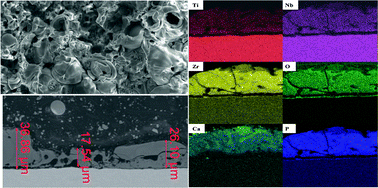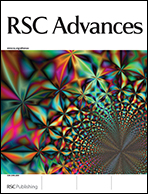In an attempt to increase the bioactivity of a vanadium-free titanium alloy, Ti–13Nb–13Zr, the plasma electrolytic oxidation (PEO) process for surface modification was utilised. Select samples were subjected to further treatment, either thermal or alkali. The morphology, chemical composition, and phase composition of the treated Ti–13Nb–13Zr alloy were investigated using scanning electron microscopy (SEM), energy-dispersive X-ray spectroscopy (EDX), X-ray photoelectron spectroscopy (XPS) and X-ray diffraction (XRD). It was observed that during the anodic process under sparking discharge conditions, the simultaneous incorporation of calcium and phosphorus in the forming oxide layer occurs. The resulting layers were porous and exhibited the typical morphology for layers formed during the PEO process. After the alkali treatment of samples oxidised at 150 V, a gel-like titanate layer was formed. The bioactivity investigations in simulated body fluid (SBF) solution indicated that after anodising at 150 V and following alkali treatment the Ti–13Nb–13Zr alloy exhibits osteoinductive properties. The approach presented here may be applied for fabricating Ti–13Nb–13Zr-based implants for hard tissue regeneration.

You have access to this article
 Please wait while we load your content...
Something went wrong. Try again?
Please wait while we load your content...
Something went wrong. Try again?


 Please wait while we load your content...
Please wait while we load your content...